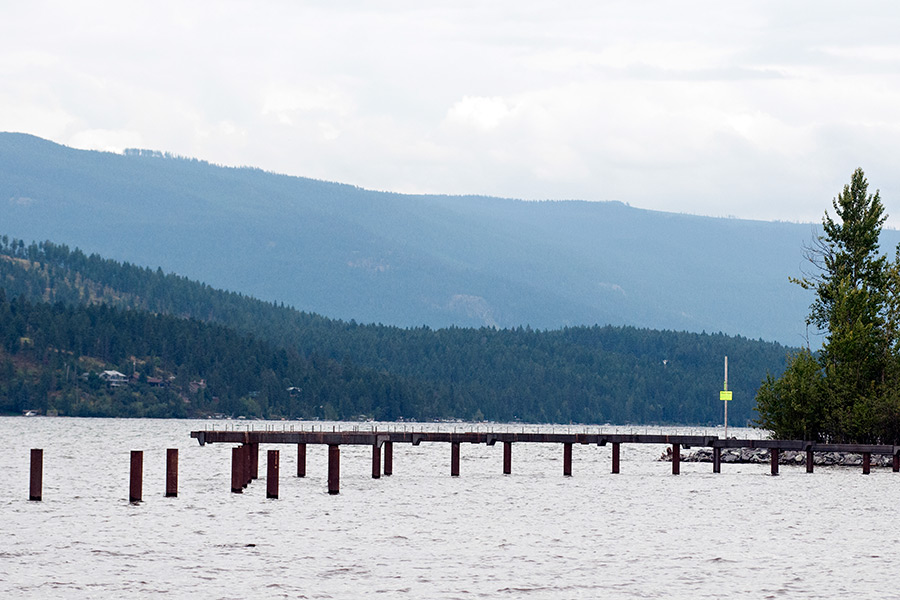The landowner building a bridge from the shoreline of their property on Flathead Lake to the island they own has decided not to pursue an amendment to the project and will move forward while working within the terms of the original permit.
The bridge project has become controversial in recent months, despite having been approved by the Flathead County Commission in 2011. The landowner, Jolene Dugan, planned that the bridge, which would be used to restore access to a portion of private property that was once a spit but is now an island in the lake, would be 481 feet long and 16 feet wide.
But construction was put on hold after the county issued a stop-work order when the planning office was informed that the bridge would need to be longer after crews had to navigate around some obstacles.
According to a request to amend the bridge’s permit, the site plan in the original permit from 2011 was “grossly inaccurate,” because the northeast section of Dockstader Island shown on the permit does not exist.
Moving the bridge also brought it across recently moved property lines, according to the planning office, which technically made the bridge a road in the eyes of the planning office, and roads are forbidden in the lakeshore protection zone. The location of the bridge also violated the setbacks for structures in the lakeshore protection zone.
According to Flathead County Planning and Zoning Director BJ Grieve, Dugan’s father, Roger Sortino, who has been representing the family throughout most of the process, called the planning office and said he didn’t want to amend the bridge project, and didn’t want to move the property boundary lines.
The project will go back to its original design, and construction can begin again, Grieve said.
“He has the permit to do it,” he said.
However, the developers may not use just any type of construction process to get their bridge pilings into the ground. If they are running into rocks and bedrock issues, Grieve said, they must use authorized construction techniques as listed in the permit.
If construction crews can’t seem to get a piling in where it was outlined in the permit, then they won’t be able to put that piling in, Grieve said. Techniques such as blasting aren’t allowed, he said.
The planning office also keeps track of permitted projects, Grieve said, and if a landowners doesn’t get in touch with the office once the project is completed, the office will go out and do an inspection when the permit expires.
“Either way, we have a look,” Grieve said.
The bridge’s permit expires next spring.
